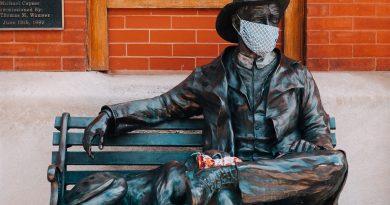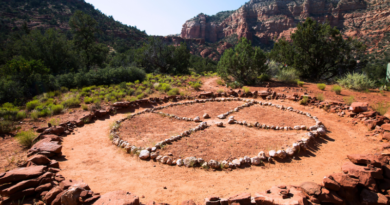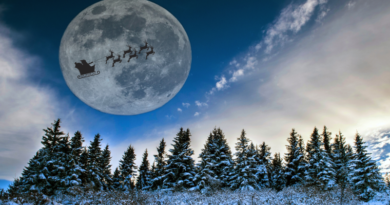Ancient practices for channelling energy
(Uplift) Using the principles of chi kung to channel energy around your body. In yoga, the most ubiquitously known sequence is the salute to the sun. In Chi Kung, which is sometimes referred to as Chinese Yoga, it’s the Microcosmic Orbit and it’s a great starting point and fundamental practice for engaging with this ancient practice.
What is Chi Kung?
The health benefits of Tai Chi practice is widely recognized, but many people aren’t aware that most practitioners are gaining these benefits because what they are actually doing is Chi Kung. While there are still some combative schools of Tai Chi, most Tai Chi practitioners are using a martial art form as the pattern of movement for them to practice the inner work of Chi Kung.
For those who study Chi Kung outside of the well-known framework of Tai Chi, there are still sequences of movements, but they are not based on martial forms. These movements can often be comparatively simple and are designed to lead chi around the body. These practices are known as Weigong (external Chi Kun), though there is also the equally important Neigong (internal Chi Kung).
Moving our Chi
If one imagines a puddle of water being contained by the earth, this can be a good analogy for chi. Like water, chi prefers to remain flowing or before long it becomes stagnate. If we were to take a stick and drag it through the dirt creating a space for the water to flow into, the water would naturally do so. In our bodies, when we relax we create space for the chi to flow into.
Our Yi is our wisdom mind. In Taoism, this wisdom mind is not dissimilar to what we might call the witness, the observer or our higher awareness. When we get our mind to go completely silent and still, it’s the part of us that is still aware even though has stopped. The world’s most ancient oracle, The Book of Changes or I Ching, is alternatively spelled, Yi Jing. Wisdom mind combined with the special kind chi that is the precious life force essence that we carry in our kidneys and sexual organs and when we run out, we expire. In this sense, Yi Jing could be translated as The Essence Of Higher Awareness.
Yi leads Chi, Chi leads me
There is a concept in Taoism and Chi Kung that can be encapsulated in the following phrase: Yi leads chi, chi leads me. When performing a weigong (external) movement it can be helpful to imagine that as you send the instruction for, say, your arm to move that you are instructing the chi to move first and the physical body follows.
Another helpful phrase is ‘where intention goes, energy flows’. The reason why the Chinese refer to Yi is to remind us that this intention needs to be directed from the highest and clearest parts of our consciousness, otherwise we may end up causing ourselves harm. When practiced in a way that isn’t ruled by the judgment of the ego Chi Kung can be profoundly healing and is regularly said to increase longevity.

Yi Jing could be translated as the essence of higher awareness.
Rivers of energy
Unlike the equally ubiquitous salute to the sun sequence in yoga, The Microcosmic Orbit is actually an internal practice that involves little or no movement. It’s a practice that involves leading our chi through what is perhaps the most important ‘river’ of energy in the human body. It’s the loop between the governing vessel which flows up the spine from the base to the top of the head and down to the point between the nose and the top lip, and the reception vessel which carries on down the centre of the front of the body switching back to the governing vessel at the perineum.
This loop of energy flow can be seen as the Amazon, Mississipi or Nile of the Taoist energy system with the more commonly known meridian system being somewhat like tributaries that not only flow into but also receive nourishing energy for the organs from this central energy loop.
The microcosmic orbit in practice
It’s best to practice while seated or standing, as according to the Taoists, humans are the bridge between heaven (the levels of existence outside physical reality) and the earth (physical existence).
If standing, unlock the knees and tuck the tailbone under and bring the spine into alignment. Perhaps most important of all is to relax and bring the warmth of a soft smile to your practice. It’s also helpful to remember that if you catch yourself frowning, this is believed to cause the energy flow to become constricted at the brow which can leave us getting stuck in the mental turmoil of our problems.
The practice itself is simple. One is to gently lead the energy up the spine and down the front. The most simple method is to use the inward breath to draw the chi upwards and the outward breath to allow it to flow downwards like a watercourse flowing down the front of the body.
It’s important in Chi Kung to always lead the chi in a way that is gentle and not forceful. For many people, particularly westerners, it is a challenging lesson to recognize the depth of the power that can come through gentleness.
Water is the softest thing, yet it can penetrate mountains and earth. This shows clearly the principle of softness overcoming hardness.
– Lao Tzu
It can also be helpful to pay particular attention to the ‘gate’ at the back of the neck to make sure there isn’t a lapse in posture here inhibiting the flow of chi. Imagining a string towards the back or your crown pulling your head upwards can be useful here.
Breathing into the belly
When breathing while doing chi kung, it’s important to practice abdominal breathing. Try imagining yourself as a glass of water where, as the breath comes in, it fills from the bottom to the top. Allow your belly to expand and protrude and towards the end of the breath you’ll find your chest begins to expand. Along with assisting in the healthy circulation of chi throughout the body, this practice also serves the physical function of actually massaging internal organs.
The perineum as a pump
A slightly more advanced version of the practice is to clench the perineum before beginning and during the inward breath, then release on the outward breath. This is said to direct the chi flow upwards, which after some practice can actually be used as a method of distributing the intensity of pleasure of an orgasm up the spine, changing the orgasm into more of a full body experience. For men, this is also a foundational practice for learning how to separate ejaculation from orgasm and become multi-orgasmic.
One way of looking at the clenching of the perineum is that it prevents the chi flowing down the reception vessel at the front from continuing down into the earth, but instead sends it up the spine once again. This clenching also has the dual purpose of more generally giving the whole body the instruction that you wish to hold chi, and in the next technique even compress chi for storage and later use.
Enjoying the flow
A great step to include in your practice can be to, at a certain point, release your conscious grip on the situation. Consider what happens when you put your hand in the bath and try to get the water circulating in one direction. If you repeatedly put your hand in and push the water to circulate, at a certain point you can take your hand out and watch it flow. If you ever tried this as a kid in a swimming pool using your whole body to push the water into creating a bit of a whirlpool, and then have stopped pushing and allowed yourself to be carried along with the flow you have created, you’ll understand this stage of the practice.
Chi compression and storage
After having practiced the Microcosmic Orbit for a period of time, people often report feeling energised with their senses feeling more alive. Some can feel dizzy and even overwhelmed by what it can bring up, which is again why gentleness with yourself and not being in any way forceful is strongly encouraged.
Choosing beautiful and peaceful surroundings to do your practice has more than cosmetic benefit in the sense that Chi Kung practitioners are essentially drawing in subtle energies from the environment around them and nourishing their system. After some time practicing the Microcosmic Orbit, it can be beneficial to store the good feelings of relaxation, strength, clarity, focus, groundedness, calmness, peace and even immunity so they can be carried with us into our ordinary world, often filled with stress and dysfunction.
When the practice has generated a sense of well being worth capturing, one can start by switching the moment of contraction to the outward breath. Imagine that instead of releasing the perineum and exhaling in order to let go of toxic energies, we instead, having been through this process of purification can now intentionally trap the energy preventing it from leaving as it normally would when we exhale. So we’ve begun holding and storing helpful tones of energy, but where does it get stored?

Choosing beautiful and peaceful surroundings has more than cosmetic benefit
The Dan Tien
Explained from the vedic/yogic perspective the Dan Tien is something similar to, or to some identical to, the Sacral Chakra. In Japan, it is exactly identical to what they call the Hara. It’s the center our creative power. When training in martial arts I frequently remind myself of the following.
All physical power comes from the waist.
All non-physical power comes from the heart.
It can be helpful to perceive the Dan Tien as a pearl of energy, for both it’s preciousness as well as it’s density due to layers and layers of calcium (or for us, energy) being built up over a long period time. When we contract the perineum before and during exhalation, we can imagine that the energy now being drawn up the spine from the inward breath is being compressed into another layer of this energetic pearl in the center of our body, an inch or two below our navel. A more advanced version is to also compress the stomach muscles, pulling them towards the spine during exhalation, though this is more forceful and therefore needs to be done with care.
8 Brocades Qigong Practice
Drawing on the energy of the heavens and the earth
One last layer that I’d like to suggest adding is that during the first phase of ‘locking the lower gate’ while drawing up the spine during inhalation, we can imagine the connection to the earth is being closed in order to favor and focus on the energies of heaven being drawn in at the crown.
When changing to the mode of compressing chi for storage and contracting the lower gate during exhalation, the lower gate is open during the inhalation. During this phase, we can imagine that we are now focusing on drawing energy from the earth, and by doing so, we bring on more earthed frequencies and making ourselves more earthed and grounded in the process. This is an excellent way to bring the practice to a close.
Just as in yoga, kirtan chanting or many other practices, the period of time after the practice when we feel most balanced can be the optimal time to go into meditation.
Like a drop of water that rolls from the leaves,
I surrender to the sea. – Jarah Tree
Source: Uplift
You may also like:
Yoga, Tai Chi and Qigong shown to be effective for back pain
Ram Dass – what is the power of the breath?






